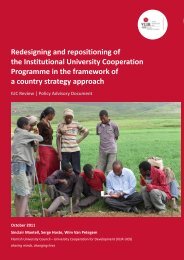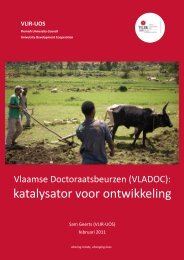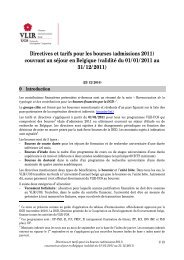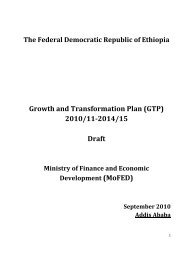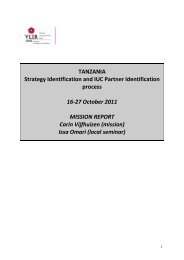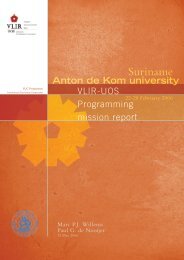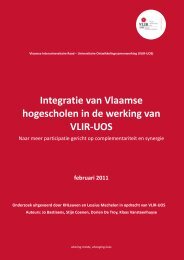Education Sector Development Program - VLIR-UOS
Education Sector Development Program - VLIR-UOS
Education Sector Development Program - VLIR-UOS
You also want an ePaper? Increase the reach of your titles
YUMPU automatically turns print PDFs into web optimized ePapers that Google loves.
<strong>Education</strong> <strong>Sector</strong> <strong>Development</strong> <strong>Program</strong> IV<br />
Component 2: <strong>Education</strong>al organizations with<br />
a clear mandate and an appropriate structure,<br />
which allow for more effective information<br />
management and decision-making.<br />
Consolidating mandates and related organization<br />
structures of offices within the educational<br />
administration<br />
Improving data collection processes throughout<br />
the educational administration<br />
Reinforce communication and collaboration<br />
between policy-makers, planners and EMIS<br />
experts at all levels<br />
Component 3: <strong>Education</strong>al organizations with<br />
a minimum level of staff with precise job<br />
descriptions and with the necessary basic<br />
resources, and with an increased number of<br />
female professionals<br />
Developing standards on the minimum numbers<br />
and profile of staff in all organizations<br />
Developing standards on the minimum level of<br />
resources to be available to all organizations<br />
Setting up an information system on staff numbers<br />
and profile and resources of all educational<br />
organizations<br />
Upgrading the provision and use of IT<br />
infrastructure at central and decentralized levels<br />
All organizations will have functioning<br />
information systems<br />
The federal ministry and the regional bureaus<br />
will have developed relevant strategic and<br />
operational plans<br />
Each office has a clear mandate to which is linked<br />
an organizational chart<br />
% of offices who make regularly available the<br />
necessary data for educational planning and<br />
management<br />
The strategic and operational plans are based on<br />
an analysis of educational information.<br />
The share of staff with the relevant professional<br />
profile in the educational organizations will<br />
increase<br />
Standards exist on the minimum numbers of staff<br />
and on their profile<br />
Standards exist on the minimum level of resources<br />
% of educational organizations with well<br />
functioning information system<br />
% of offices with necessary IT infrastructure<br />
Gender and <strong>Education</strong><br />
1. Situation analysis<br />
Women’s participation in education is<br />
constrained by economic, socio-cultural,<br />
familial, personal and school factors. The<br />
economic problems relate to parents’ inability<br />
to send girl children to school especially<br />
if schools are far from home or girls drop<br />
out due to lack of finances. The problem is<br />
more serious in rural areas, particularly in<br />
pastoralist regions. The traditional division of<br />
labor in homes constrains girls’ success in<br />
education. School distance and harassment,<br />
feelings of discomfort to participate equally<br />
with men are stumbling blocks for female<br />
students. In addition, dropout in high school is<br />
fuelled by the practice of early marriage and<br />
marriage by abduction.<br />
Gender equality was already a major<br />
priority area and a cross-cutting<br />
issue in ESDP III. As a consequence<br />
of concerted affirmative action (entry<br />
requirements, and financial support<br />
such as a pilot scholarship program<br />
and tutorial support programs)<br />
and overall expansion, the gender<br />
parity index (GPI) has considerably<br />
improved in favor of females. At first<br />
and second cycle primary, for GER, it<br />
increased respectively from 0.87 and 0.69<br />
in 2004/05 to 0.93 and 0.92 in 2008/2009.<br />
Girls’ completion rate at grades 5 and 8 also<br />
improved in which it has increased from 49.5%<br />
As a consequence<br />
of concerted<br />
affirmative action (entry<br />
requirements, and financial<br />
support such as a pilot<br />
scholarship program and<br />
tutorial support programs)<br />
and overall expansion, the<br />
gender parity index (GPI)<br />
has considerably improved<br />
in favor of females.<br />
71




